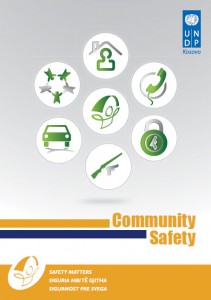Books:
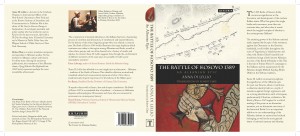 The Battle of Kosovo 1389. An Albanian Epic, London: I.B. Tauris, 2009.
The Battle of Kosovo 1389. An Albanian Epic, London: I.B. Tauris, 2009.
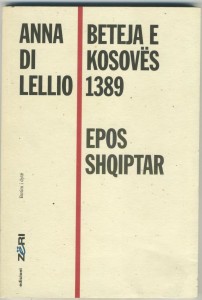 Beteja e Kosovës, Prishtina: Zëri, 2010
Beteja e Kosovës, Prishtina: Zëri, 2010
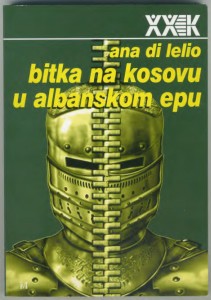 Bitka na kosovu u albanskom epu, Beograd: Biblioteka XX Vek, 2010.
Bitka na kosovu u albanskom epu, Beograd: Biblioteka XX Vek, 2010.
The Case for Kosovo. A Passage to Independence, (ed.) London: Anthem Press, 2006.
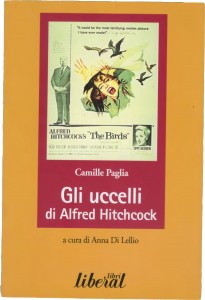 Editor and Translator of Camille Paglia, The Birds, British Film Institute, 1998 [Gli Uccelli, Liberal Libri, 2000]
Editor and Translator of Camille Paglia, The Birds, British Film Institute, 1998 [Gli Uccelli, Liberal Libri, 2000]
I Gay. Colloquio con Edmund White, [Gays. An Interview with Edmund White] Liberal Libri, 1999.
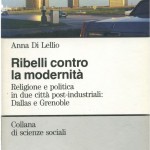 Ribelli contro la Modernitá. Religione e Politica in Due Cittá Post-Industriali: Dallas (US) e Grenoble (Francia), [Rebels against Modernity. Religion and Politics in two Post-Industrial Cities: Dallas (US) and Grenoble (France)] Milano: Franco Angeli, 1993.
Ribelli contro la Modernitá. Religione e Politica in Due Cittá Post-Industriali: Dallas (US) e Grenoble (Francia), [Rebels against Modernity. Religion and Politics in two Post-Industrial Cities: Dallas (US) and Grenoble (France)] Milano: Franco Angeli, 1993.
Articles and Chapters in Books:
“The Field of the Blackbirds and the Battle for Europe,” in Bill Niven, Ruth Wittlinger and Eric Langenbacher (eds.), Dynamics of Memory in the New Europe, Berghahn Books, 2013.
“La Battaglia della piana dei merli nella memoria albanese: l’invenzione di una tradizione,” in Rassicurazione e memoria – per dare un futuro alla pace. Quanderno 2 della Fondazione Venezia per la ricerca sulla pace, 2013.
“Engineering Grassroots Transitional Justice in the Balkans: The Case of Kosovo,” East European Politics and Societies, XX (X) 2012: 1-20
“The Missing Revolution in Serbia: 1989-2008,” International Journal of Politics, Culture and Society, 22 (3) September 2009: 373-384.
“The Narrative of Genocide as Cosmopolitan Memory and Its Impact on Humanitarian Intervention” Interdisciplinary workshop on Collective Memory and Collective Knowledge in a Global Age, London School of Economics, 17/18-June-2007.
http://www.lse.ac.uk/Depts/global/workshoppapers.htm
“The Legendary Commander: The Construction of an Albanian Master-Narrative in Post-War Kosovo,” Nations & Nationalism, 12 (3) 2006: 513-529 (with Stephanie Schwandner-Sievers).
[also in Albanian, “Komandant legjendar:ndërtimi i një master-narracioni shqiptar në Kosovën e pasluftës” Perpjekja, XII (23), 2006: 77-95]
“Sacred Journey to a Nation: The Construction of a Shrine in Post-War Kosovo,” Journeys. The International Journal of Travel and Travel Writing, 7 (1), 2006: 27-49 (with Stephanie Schwandner-Sievers).
[also in Albanian, “Udhëtimi i shenjtë drejt kombit: ndërtimi i një faltoreje në Kosovën e pasluftës” Perpjekja, XII (24) 2007: 32-54]
“Empire Lite as a Swamp,” Transitions, XLV (1), 2005: 63-79
“Feminism” pp. 235-246 in Gianfranco Pasquino (ed.), La Politica Italiana, Dizionario Critico 1945-95, [Italian Politics. A Critical Dictionary 1945-95] Bari: Laterza, 1995
“Tra Scienza, Etica e Politica: Teorie della Sociologia Interpretativa nel Dibattito Statunitense,” [Between Science, Ethics and Politics: Theories of Interpretive Sociology in the American Debate] Rassegna Italiana di Sociologia, 4, Ottobre-Dicembre 1990: 581-558.
“Immagine e Storia. La Cittá negli Stati Uniti,” [Image and History. The City in the United States] Democrazia e Diritto, (4-5) 1989: 301-321.
“Le Aspettative Sociali di Durata. Intervista a Robert Merton,” [Socially Expected Durations. Interview with Robert Merton] Rassegna Italiana di Sociologia, (1) 1985: 3-26.
Policy Analysis:
Community Safety Report, UNDP, Kosovo, 2009.
Freedom of Movement Report, UNDP, Kosovo, 2009
Small Weapons Collection Campaign Report, UNDP, Kosovo, 2009.
“A Civil Alternative: an Evaluation of the IOM KPC Program,” in International Organization for Migration (IOM), KPC Training Program, Prishtina, 2004.
Comparative Study on Housing for Foreign Workers in Denmark, Germany and France. City of Bologna, 1991
Survey sul Partito Comunista Italiano (With Nino Magna and Renato Mannheimer), anticipating the break-up of the Party into a traditional Communist Party and the Democratic Party of the Left, CESPE
Rapporto sui Finanziamenti ai Partiti Politici in Germania, Francia e Svezia (With Nino Magna and Antonio Missiroli), an analysis of patterns of corruption in both public and private funding of political parties, CESPE.

